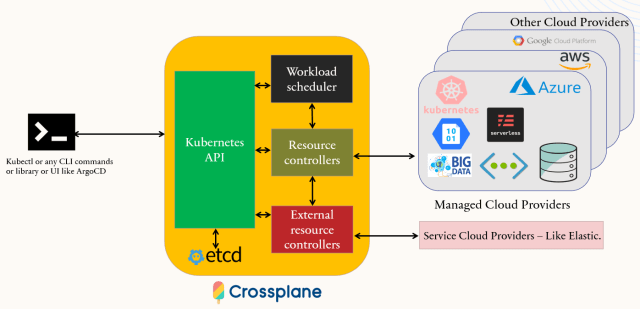What is Crossplane?
Crossplane is a tool created by Upbound which has been released in December of 2018. It has been accepted as an incubating project by the CNCF (Cloud Native Computing Foundation) in 2020.
Crossplane is developed as a Kubernetes add-on and extends any Kubernetes cluster with the flexibility to provision and manage cloud infrastructure, services, and applications. Crossplane uses Kubernetes-styled declarative and API-driven configuration and management of infrastructure, on-premises or within the cloud.

















